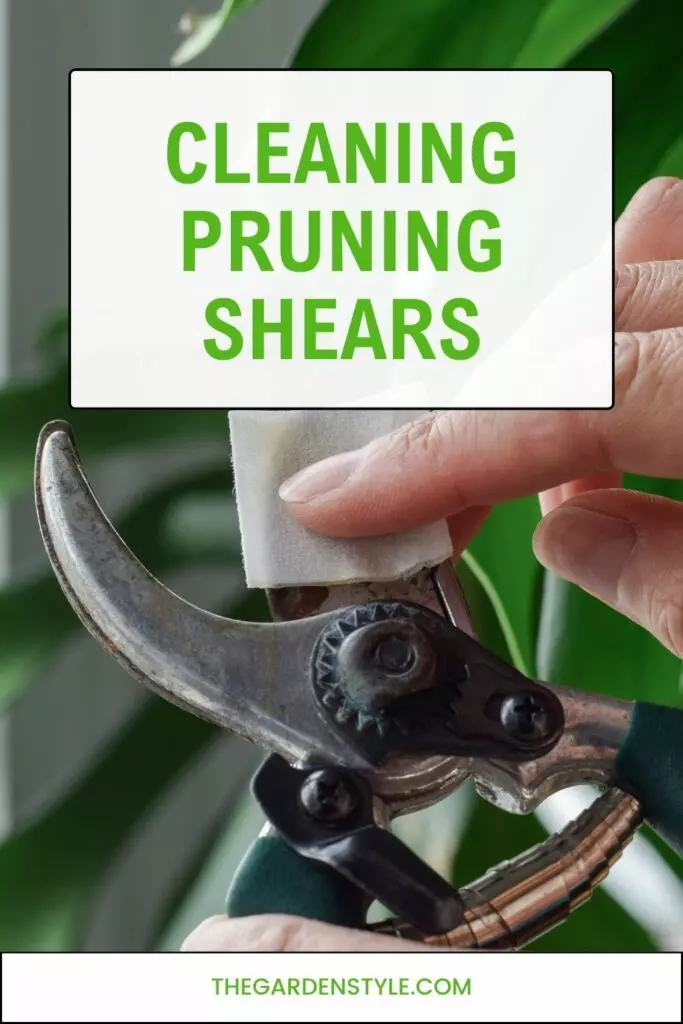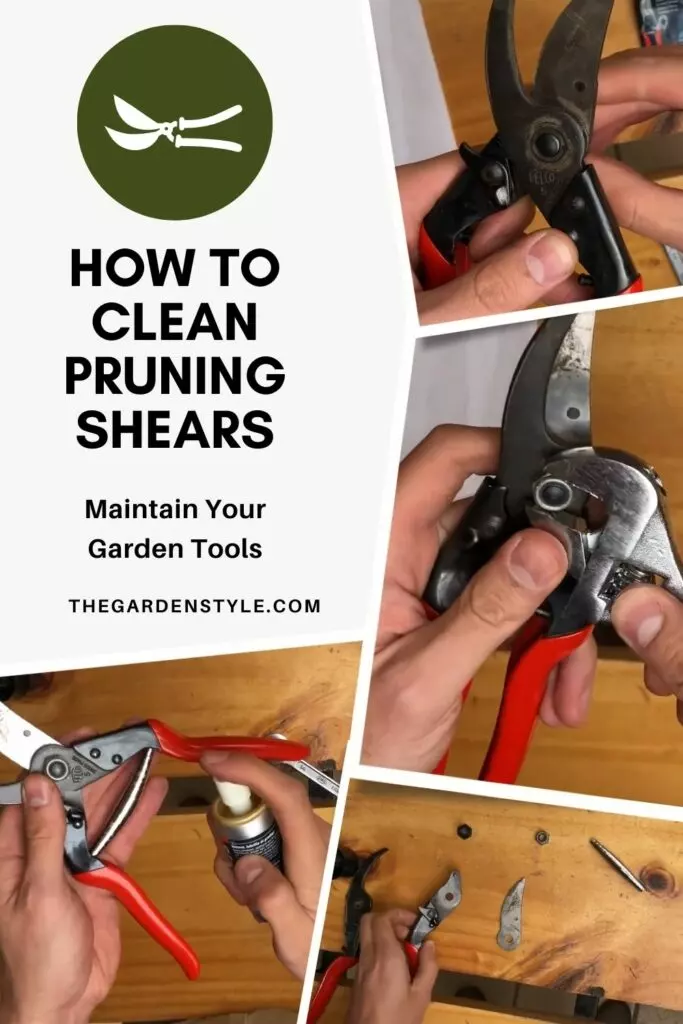Pruning shears are an invaluable gardening tool that allow you to trim and shape plants quickly and efficiently. Over time, sap, soil, and plant debris can build up and prevent the blades from functioning properly. Learning how to clean pruning shears is essential for maintaining sharp blades and preventing the spread of disease between plants.
In this article, we will walk through the steps of cleaning pruning shears, look at supplies you’ll need, and discuss proper storage and signs that your shears need sharpening. With some simple maintenance, your pruning shears can stay clean, sharp, and ready to snip for seasons to come!
Table of Contents
Why Clean Pruning Shears?
Cleaning pruning shears regularly is important for several reasons:
Prevent Disease Spread: Sap and plant matter left on the blades can harbor bacteria, fungi, and viruses. Using dirty shears can transfer diseases between plants. A quick cleaning helps sanitize the tool and prevent contamination.
Remove Sap and Residue: Pruning shears get very sticky from tree sap and other plant residues. These substances can prevent the blades from functioning smoothly. Regular cleaning keeps the mechanism moving freely.
Keep Blades Sharp: Bits of dirt, leaves, and debris will dull the blades over time. Washing away this material helps maintain the edge of the shears for clean cuts.
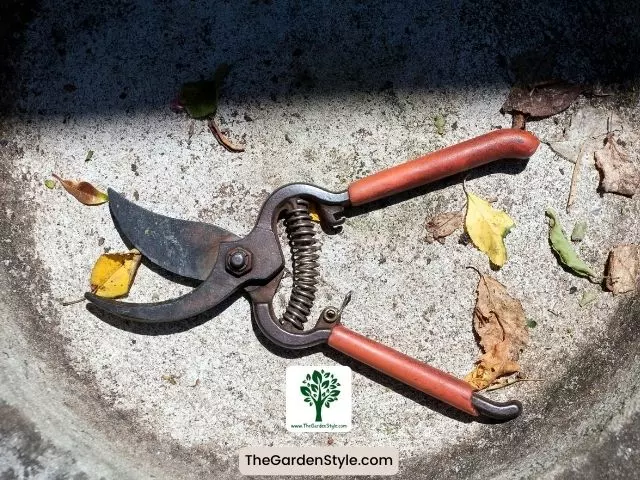
Supplies Needed
Gather the following supplies to get your pruning shears sparkling clean:
Pruning Shear Oil: Use a light oil made specifically for lubricating gardening tools. Regular oils can gum up the blades.
Small Brush: A soft brush is useful for scrubbing away stuck-on gunk. Old toothbrushes work well.
Clean Cloth: Have a few rags on hand to dry the pruning shears after washing. Microfiber cloths are ideal.
Bucket: Fill a bucket with warm water for rinsing the shears after applying soap.
Mild Dish Soap: Look for a gentle, eco-friendly soap that won’t damage the metal or scale of the shears.
- BIODEGRADABLE – Synthetic ingredients are biodegradable and VOC-free. This lithium and calcium-based lubricant does not contain butane or propane gas.
How to Clean Pruning Shears Step-by-Step
Follow these steps to clean your pruning shears thoroughly:
Disassemble the Shears: Take apart the two blades so you can access all the nooks and crevices. Refer to your owner’s manual for brand-specific disassembly.
Remove Debris: Use the small brush and warm water to scrub away any dirt, sap, or plant material stuck to the blades.
Wash the Blades: Create a mild soapy solution and use a sponge or rag to wash each blade. Ensure all areas are sudsy.
Rinse Thoroughly: Rinse away all the soap with clean water. Check for any remaining debris.
Dry the Blades: Wipe down all components with a clean lint-free cloth. Allow the pieces to air dry fully.
Lubricate the Blades: Apply a light coating of pruning shear oil to prevent rusting. Avoid getting oil on the handles.
Reassemble the Shears: Once totally dry, put the pruning shears back together according to the manufacturer’s instructions.
Storing Pruning Shears: With clean shears in hand, be sure to store them properly between uses:
Wipe Down After Each Use: Get in the habit of wiping blades clean before putting them away to prevent buildup.
Store in a Dry Place: Moisture causes rust and corrosion. Keep pruners in a shed or garage—not outdoors.
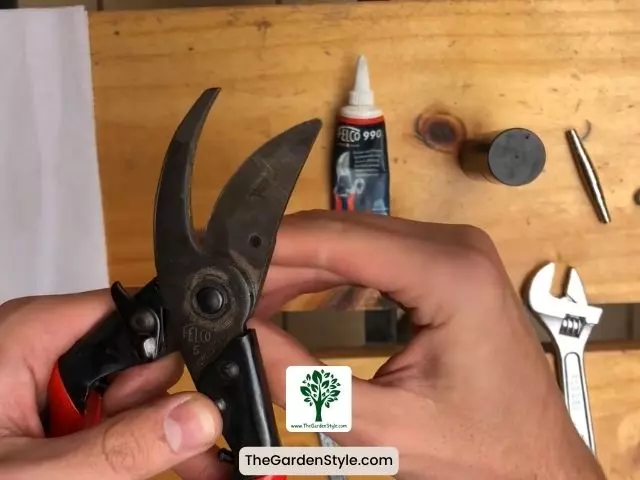
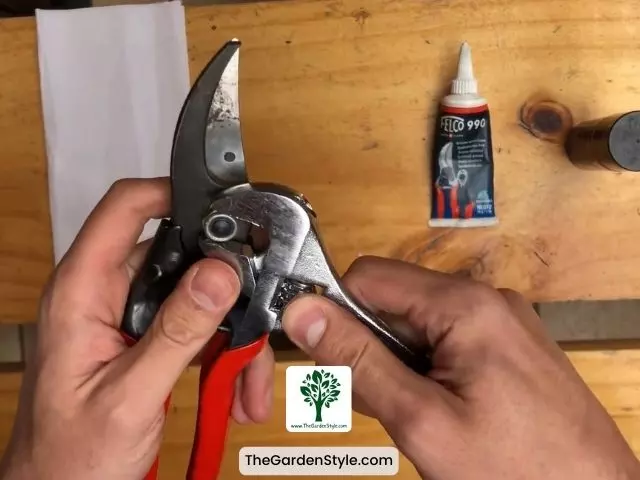
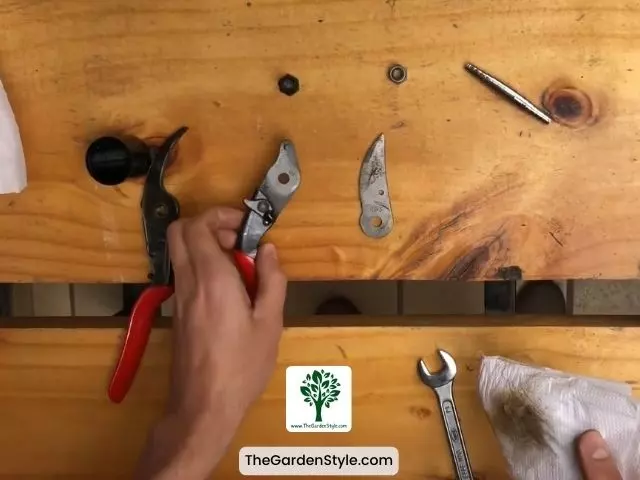
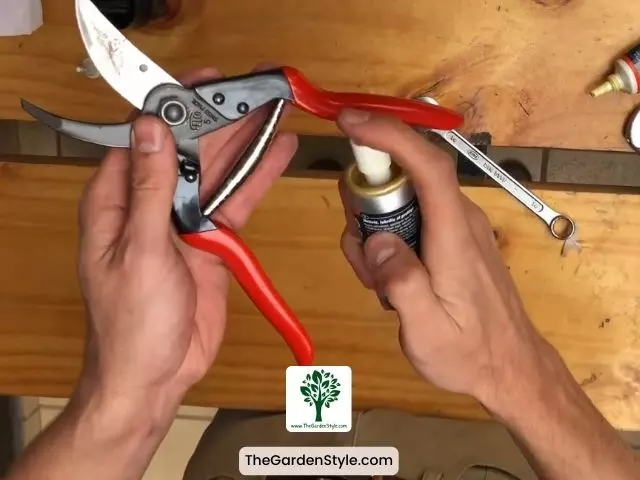
Signs Your Shears Need Sharpening
Watch for these clues that your pruning shears need professional sharpening:
Crushed Stems: If you must squeeze very hard to make cuts, the blades are likely dull. Sharp shears slice right through.
Frayed Cuts: Ragged, torn cuts indicate your shears need sharpening. Clean cuts should be smooth.
Dull Blades: Inspect the beveled edges of the blades. Gray, rounded edges mean it’s time to sharpen.
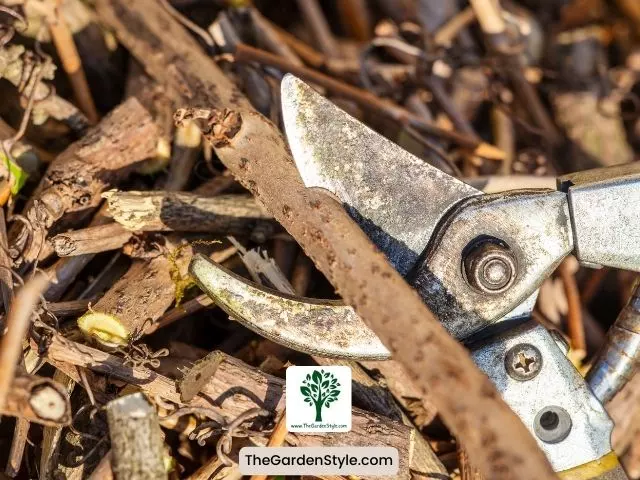
Conclusion
Like any frequently used tool, pruning shears need regular maintenance to keep them in tip-top shape. Take a few minutes to give your shears a thorough cleaning after each use. Disinfect, wash away debris, lubricate, and store properly. Stay alert for signs of dullness and get them professionally sharpened when needed. With this simple care, your pruning shears will snip cleanly through countless gardening seasons!
Recommended reading: When to Prune Knockout Rose Bushes
Frequently Asked Questions
Yes, wiping down the blades with 70% isopropyl alcohol is an effective disinfectant between plants. Rinse off any residue after sanitizing.
Hot, soapy water helps dissolve sap. Gently scrub with an old toothbrush. Avoid using solvents that could damage the finish.
Look for lightweight oils made specifically for gardening tools. Machine oil, WD-40, and vegetable oils can leave a gummy residue.
Plan to sharpen your pruning shears before each gardening season. Signs of dullness like crushing stems also indicate it’s time.
No, the heat and water pressure of a dishwasher can damage the blades and mechanism. Hand washing is best.
Save these pins for later so you can use this gardening guide on how to clean pruning shears.
